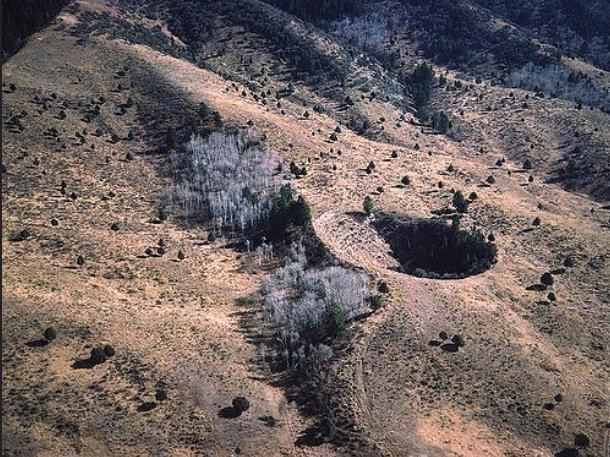- Greeley R. et al. (1969). Swan Valley Craters // Meteoritics 4:55.
- Jarmo Moilanen (2009). Impact Structures of the World.
- D. Rajmon (2012).
Three previously undescribed craters in southeastern Idaho were investigated to determine their origin. The craters, 80m, 28m and 10m in diameter, are spaced 713 m and 432 m apart. They tare situated on pediment above the Snake River flood plain. The largest crater is 31 m deep with wall slope ranging from 32œ to 45œ ; the intermediate crater is 10m deep with wall slope ranging from 28œ to 40œ. Crater walls are composed of unconsolidated colluvium ranging from silt to meter-size dolostone boulders. Loess of variable thickness overlies the area. The trend of the craters is subparallel to and lies northeast of the Grand Valley fault. Crater morphology and structure, together with results from metal detector and magnetometer surveys, fail to yield evidence to support origin by meteoritic impact. The structures are interpreted as tectonic collapse associated with the Grand Valley fault, possibly aided by solution of underlying limestone and dolostone.

Meteorite crater near Swan Valley (flickr).
îÁ ÇÌÁ×ÎÕÀ

